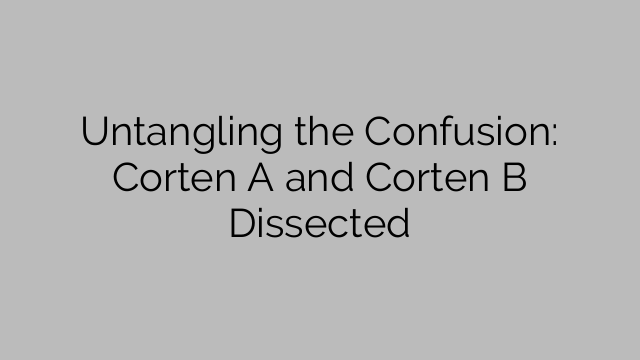First and foremost, it is essential to understand the nature of weathering steel. Weathering steel, also known as Corten steel, is a type of steel alloy that develops a protective rust-like appearance when exposed to the elements over time. This characteristic sets weathering steel apart from conventional steels, as it eliminates the need for painting or other protective coatings, reducing maintenance costs significantly.
Now let’s delve into the specifics of Corten A and Corten B:
1. 構成:
– Corten A: It is primarily composed of iron with additions of copper, chromium, and phosphorus, which enhance its corrosion resistance.
– Corten B: It has a similar composition to Corten A but with slightly higher phosphorus content for improved weathering resistance.
2. 機械的特性:
– Corten A: This grade exhibits higher tensile strength and yield strength compared to Corten B. It also demonstrates better elongation and impact resistance.
– Corten B: While Corten B has slightly lower mechanical properties than Corten A, it still possesses sufficient strength and plasticity for structural applications.
3. Weathering Characteristics:
– Corten A: With its superior corrosion resistance, Corten A is well-suited for resisting atmospheric corrosion in harsh environments. This grade is particularly useful in industrial and maritime applications.
– Corten B: Corten B is also highly resistant to atmospheric corrosion but performs better in environments with mild corrosive conditions. Its applications range from architectural structures to freight wagons.
4. Welding and Fabrication:
– Both Corten A and Corten B can be welded using conventional welding techniques. However, additional care must be taken due to their high content of phosphorus, which can increase the likelihood of cold cracking.
5. Availability:
– Corten A and Corten B are readily available in various thicknesses and dimensions, making them suitable for a wide range of applications.
In conclusion, while Corten A and Corten B share many similarities, they do have distinct characteristics that make them better suited for specific applications. Understanding these differences is crucial to choose the appropriate grade of weathering steel for your project. Whether you require higher mechanical properties or improved resistance to corrosive environments, the choice between Corten A and Corten B will depend on your specific needs.
Therefore, it is essential to consult with professionals, such as structural engineers or steel suppliers, to ensure you select the right grade for your intended application. By untangling the confusion surrounding Corten A and Corten B, you can make an informed decision and harness the unique benefits of weathering steel in your projects.
[ad_2]

